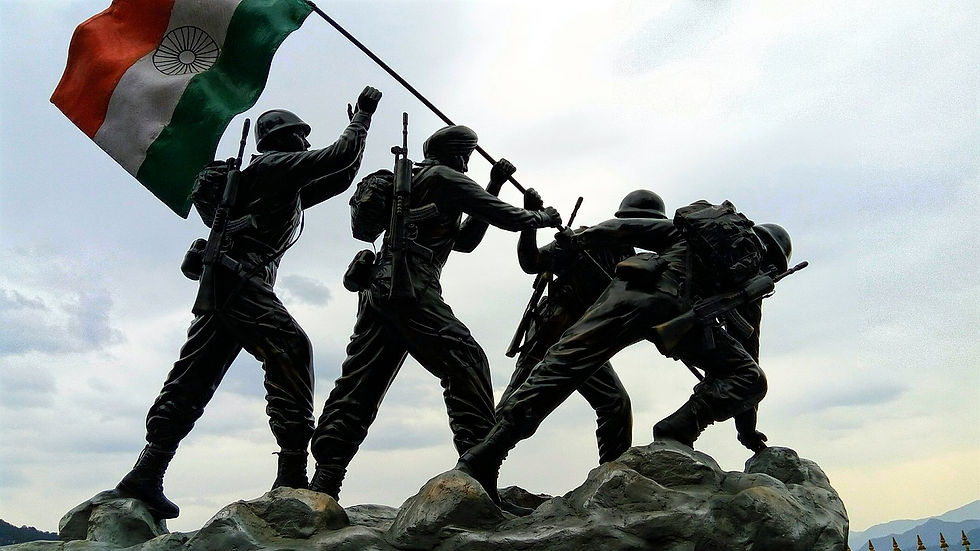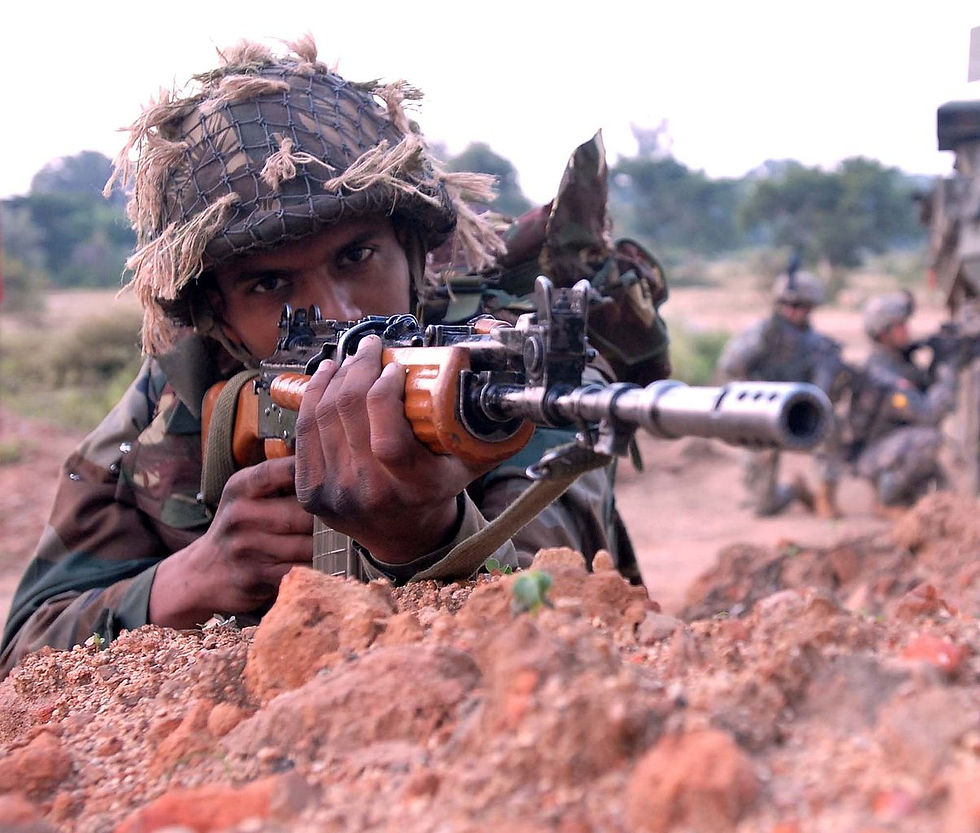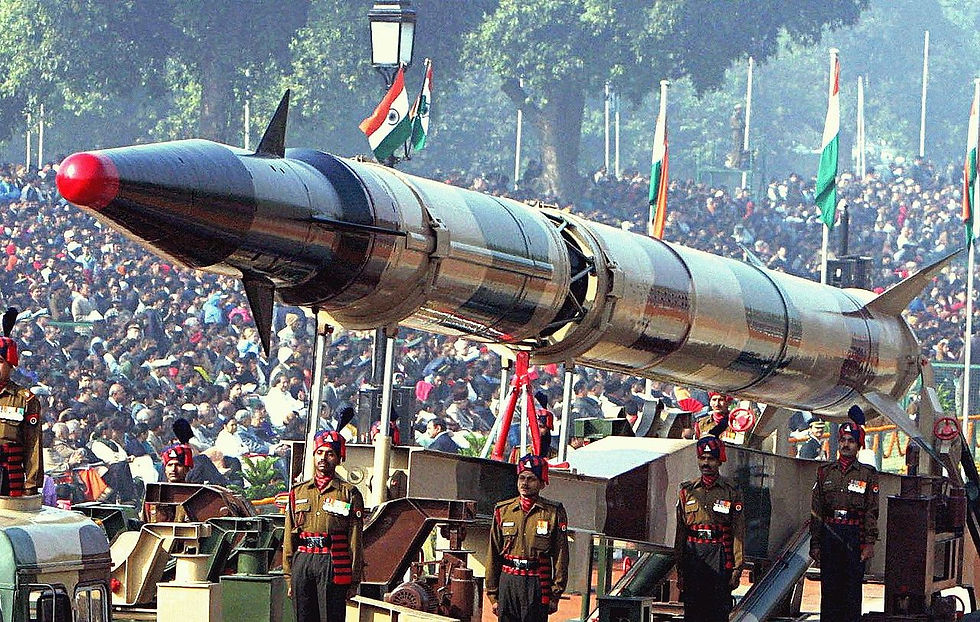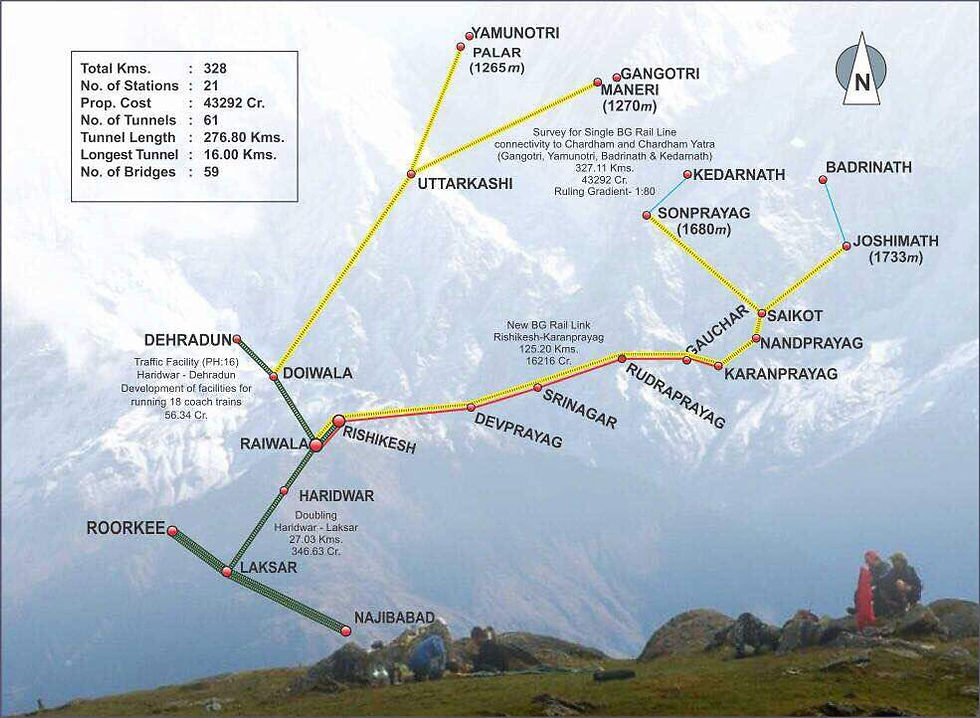Indian Army
- Team Himalayan Journal

- Aug 12, 2020
- 2 min read

The Chief of Army Staff controls the administrative and strategic operations of the Indian Army.
Most of the armed forces are considered to be an army only, this is also right because, in defence, the army is at the first and main place.
At present, there are about 13 lakh soldiers - serving in different positions in the civilian army, while in 1948 there were about 200,000 soldiers in the army.

The headquarters of the Army is in New Delhi.
The Chief of the Army is assisted by the Vice Chief of the Army and the Chief of Staff.
These include Deputy Chief of Army Staff, Adjutant-General, Quarter Master-General, Master-General of Ordnance and Army Secretary and Engineer-in-Chief.
The Army is organized into 6 Commands-
Western Command (Headquarters: Shimla )
Eastern Command ( Kolkata )
Northern Command (Udhampur) Southern Command ( Pune )
Central Command ( Lucknow )
South-Western Command ( Jaipur )
History of Indian Army
The history of the Indian Army has a close relationship with the beginning of British rule in India.
Indian soldiers fought valiantly in the First World War and they contributed significantly to the British success in this war.

Despite this, the British strongly resisted providing Indian leadership to the Indian Army.
But as the army of 1,10,000 Indian soldiers won 12 Victoria Crosses in the war, there was increasing pressure on the British to recruit Indians in the officer cadre of the Indian Army.
The first major change came in about 1919– 1920 in response to the continuing demand for Indianisation of the army by the Indian political leadership. At the Royal Military Academy, 10 posts were reserved for suitable Indians.
The ever increasing political pressure forced the British power to establish the Indian Military Academy (IMA) at Dehradun on 1 October 1932 to train future officers of the Indian Army.
During the Second World War, many Indian officers and soldiers fought on behalf of the Allies, in which the troops of the Indian Army were recognized for their superior combat capability. During this period, out of 31 Victoria Crosses given to Indian Army officers and soldiers, 28 were found by Indians.

PIC:- Agni missile
After World War II, there were many revolts in the Army, Navy and Air Force. This convinced the British and the economically exhausted Britain that it could no longer depend on the Indian Army to maintain its colonial rule over India. This feeling was an important factor in the decision of the British to leave the subcontinent.




Comments